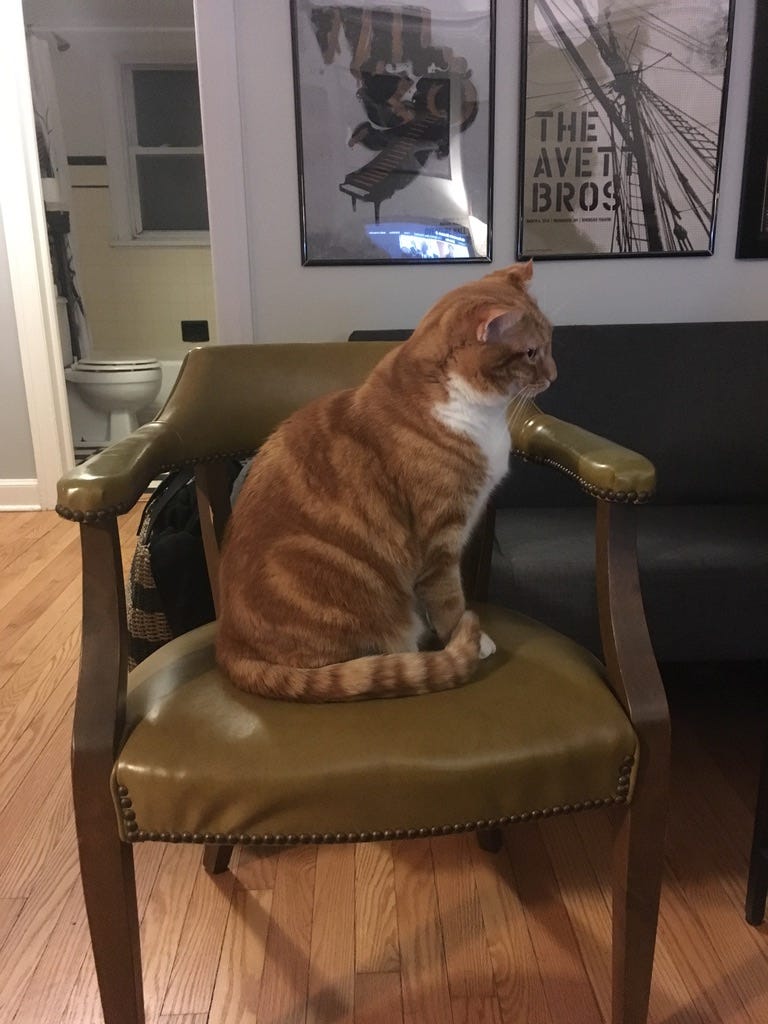Years ago, the Spousal Unit and I lived in a charming shoebox of an apartment that was built in 1940. As with many pre-WWII dwellings, it had a single bathroom, which was also quite small. What it lacked in usable storage, it more than compensated for with a proper tub and a shower window1.

By the time this bathroom was our bathroom, eighty years had passed from when the fixtures had been installed, and there was little evidence of updates, aesthetic or functional.
One day, we noticed the bathroom sink was getting slow to drain. We are both fairly handy people, so we tried everything we were willing to try on 80-year old plumbing: boiling water, vinegar and baking soda to make a sink volcano, a hair-remover thingy that pulls soggy wookies out of drain pipes, and yet more boiling water. None of this worked and the problem kept getting worse until the sink would not drain at all.
You wouldn't know it from the number of projects we DIY, but we do have some common sense. A fully-exposed 80-year-old pipe that is no longer working is a delicate proposition, but this particular pipe joined with the rest of the vintage plumbing as it went into the wall. After trying the time-tested approach of standing around, putting our thumbs in our belt loops and rocking back and forth slightly as we considered the problem at hand, we called our landlord and requested a plumber.
As the sink situation deteriorated, and certainly once it stopped draining altogether, we were left without a bathroom sink (obviously). This was an inconvenience, certainly, but it wasn't a catastrophe. One advantage of shoebox apartments is that everything is quite close together, and we had a perfectly functional sink twenty paces away in the kitchen.
After what seemed at the time to be a forever-long delay, the plumber came. The situation was exactly as bad as we had feared, and it took the trained professional no little effort and an extra trip to the plumbing supply to limit the scope of the project to the plumbing outside the wall. Thankfully, he managed it.
The real magic happened once the sink was restored: It felt like the most decadent luxury to be able to wash our hands and brush our teeth in the bathroom sink. Weeks before this moment, before the sclerotic pipe threw is final clot, we had taken this absolutely for granted.
Not having a bathroom sink was annoying, but there was nothing we couldn’t do at the kitchen sink. But after an absence, the mundanity of a functioning bathroom sink was recognized for the grand luxury that it truly is.
For most of human history, running water was not a given, especially not temperature-controlled running water. There are still places—even in America—where running water is not guaranteed. And yet we are so accustomed to having a seemingly-infinite supply of hot and cold water whenever we wish that we take this miracle of modern plumbing for granted.
The Stoics, whose thinking I like on some topics and find quite callous on others, had a practice of depriving oneself from various things as a way of reinforcing that luxuries are luxuries and therefore not required for life. But as a hedonist myself, I've got to add that being temporarily deprived of the luxuries to which we have become so accustomed is a potent way to create delight from the previously overlooked.
As near as I can tell, showers were far from mainstream in 1940. Instead, folks would enjoy a good soak and leave their hair slightly greasy. The bathroom was never intended to have a shower-over-tub, simply a tub. Therefore, the builders put in a lovely wood-framed window at a height that can put on quite a show for the neighbors when one is standing directly in front of it. And yes, the window frame absolutely does rot out over time.




Having lived (temporarily) without proper utilities, I can attest that a functional sink is not a luxury. Neither is access to running water.
While I readily accept that some people choose to "live off the land" they usually have a well with some sort of pumping system to provide water.
Unlimited hot water maybe a luxury for some, but for most of us, it is simply a requirement.
I think I speak for most Americans when I say I rarely see homes for sale or rent without working indoor plumbing.
And we appreciate it.